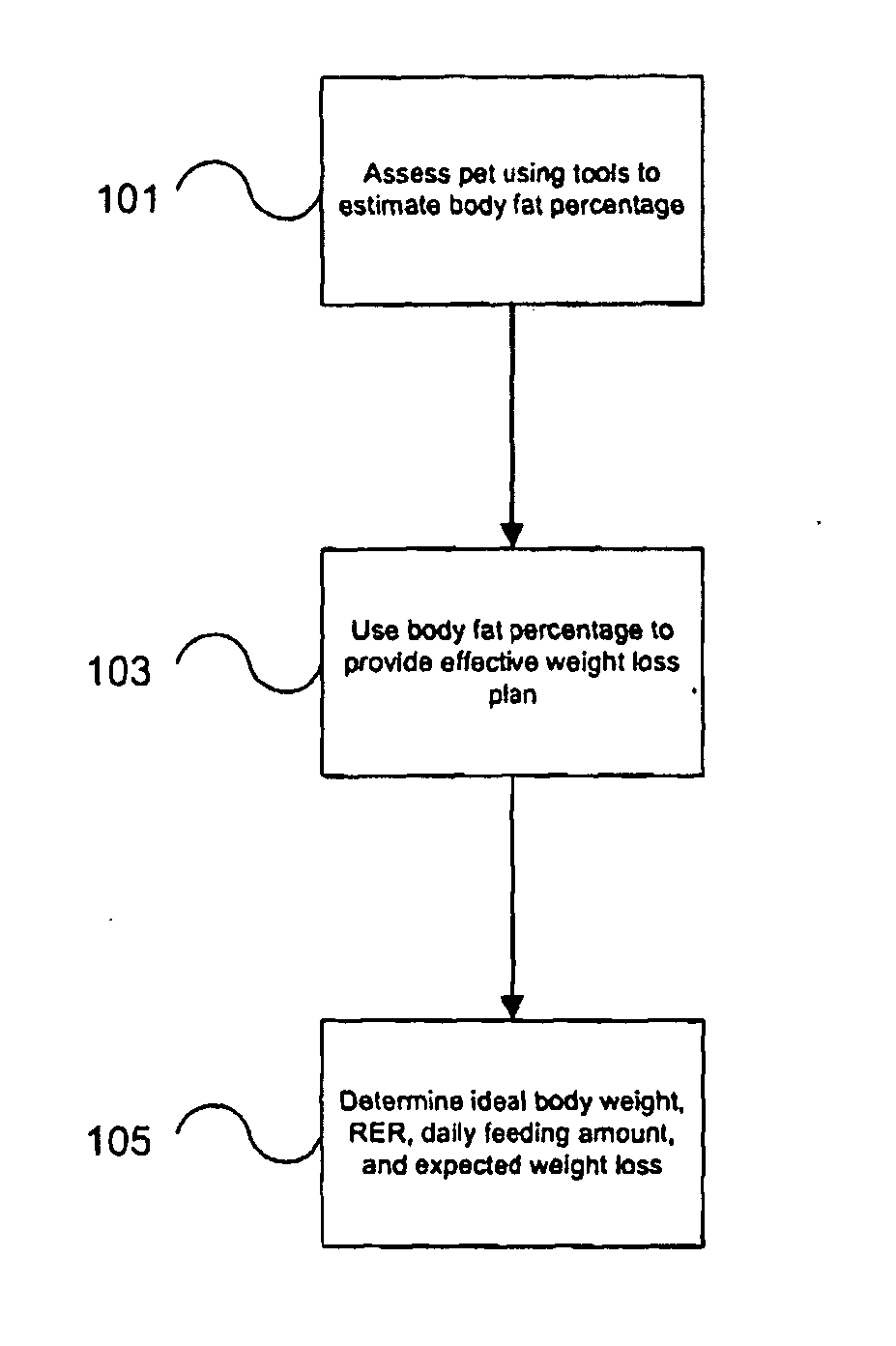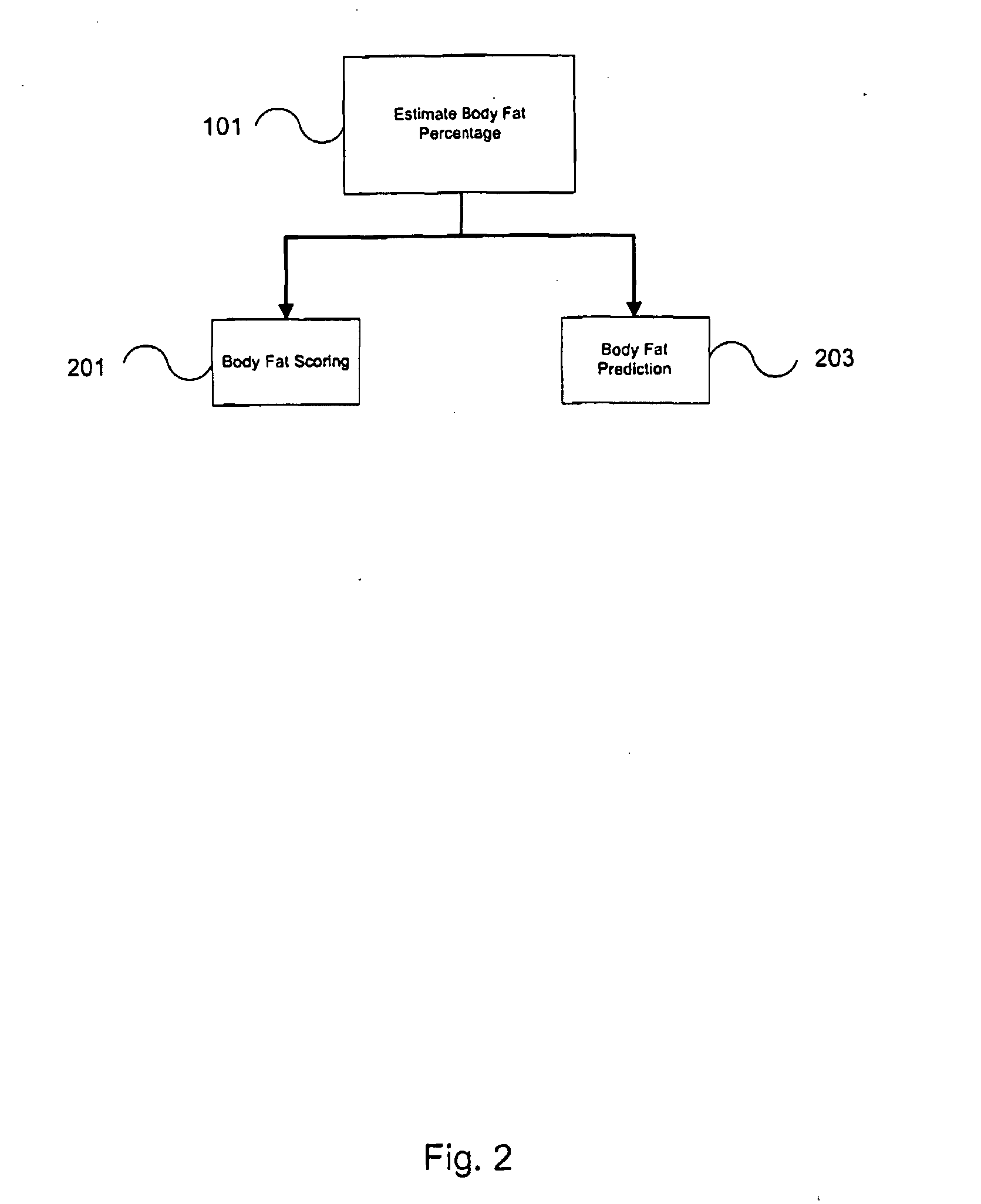Method of managing a weight condition in an animal
a technology an animal, applied in the field of managing a weight condition in an animal, can solve the problems of inability to accurately prescribe, difficulty in presenting a veterinarian or animal practitioner, and excessive intake of calories, so as to reduce the weight of the companion animal and achieve effective weight loss
- Summary
- Abstract
- Description
- Claims
- Application Information
AI Technical Summary
Benefits of technology
Problems solved by technology
Method used
Image
Examples
example 1
[0067]Thirty-six adult dogs with body composition ranging from overweight to morbidly obese were evaluated. The following measurements and procedures were conducted: body weight, palpation and visual assessment, digital photographs (front, rear, side and from above), body size and shape measurements, radiographs (head, thoracic and pelvic), and DEXA.
[0068]Lean body mass, fat mass and percent body fat were determined by DEXA. This data was used to evaluate other methods by providing the dependent variables to predict body composition (lean body mass, fat mass and percent body fat) by using independent variables obtained from morphometric measurements, skeletal measurements, body weight, age, gender, and neuter status. In this manner, equations to predict lean body mass, fat mass, and percent of fat were derived. Two separate models were applied. The first model was derived from the regression analysis using morphometric measurement. A second model was derived from the regression anal...
example 2
[0121]Thirty-seven adult cats with body composition ranging from overweight to morbidly obese were evaluated. The following measurements and procedures were conducted: body weight, palpation and visual assessment, digital photographs (front, rear, side and from above), body size and shape measurements, radiographs (head, thoracic and pelvic) and DEXA.
[0122]Lean body mass, fat mass and percent body fat were determined by DEXA. This data was used to evaluate other methods by providing the dependent variables to predict body composition (lean body mass, fat mass and percent body fat) by using independent variables obtained from morphometric measurements, skeletal measurements, body weight, age, gender, and neuter status. In this manner, equations to predict lean body mass, fat mass, and percent of fat were derived. Two separate models were applied. The first model was derived from the regression analysis using morphometric measurement. A second model was derived from the regression ana...
PUM
 Login to View More
Login to View More Abstract
Description
Claims
Application Information
 Login to View More
Login to View More - R&D
- Intellectual Property
- Life Sciences
- Materials
- Tech Scout
- Unparalleled Data Quality
- Higher Quality Content
- 60% Fewer Hallucinations
Browse by: Latest US Patents, China's latest patents, Technical Efficacy Thesaurus, Application Domain, Technology Topic, Popular Technical Reports.
© 2025 PatSnap. All rights reserved.Legal|Privacy policy|Modern Slavery Act Transparency Statement|Sitemap|About US| Contact US: help@patsnap.com



